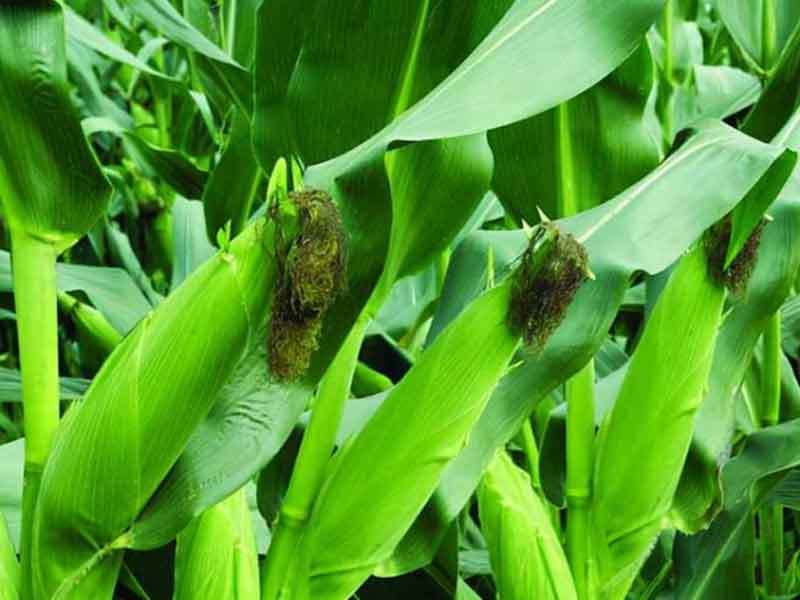A Comprehensive Guide to Corn Square Foot Gardening
Introduction
Many people assume corn cannot be grown in a small space. However, with the right techniques and planning, you can also grow corn effectively in a square foot garden. This method is known as square foot gardening corn. It allows you to grow this staple crop even in urban areas or small backyards.
Getting Started with Corn Square Foot Gardening
Selecting the Right Location
Square foot gardening corn needs 6-8 hours of direct sunlight daily. Inadequate sunlight will result in stunted growth and reduced yield..
Soil Amendments and Fertilizers
Corn is a heavy feeder plant. It requires rich, well-drained soil to grow effectively. Amend the soil with organic matter before planting a corn square foot garden. For example, compost or aged manure. You should test the pH of your soil. Adjust it accordingly for optimal growth.
Use natural fertilizers to ensure your corn plants health and vigor. For example, fish emulsion or seaweed extract. They provide necessary nutrients without over-fertilizing. Add mulch can retain moisture and suppress weeds.
Building the Square Foot Garden
Designing a grid layout helps organize the space efficiently. This ensures proper planting distances between corn plants. Raised beds can provide better drainage and prevent soil compaction.
Corn Varieties for Square Foot Gardening
Dwarf and Compact Corn Varieties
You should choose dwarf and compact corn varieties. They are ideal for square foot gardening. These types of corn have been specifically bred to grow in small spaces. Some good examples include Cherry Bantam, Golden Midget, and Baby Corn. These varieties typically reach heights of 4 feet or less. They can thrive in the square foot garden which has limited space.
Considerations for Climate and Growing Conditions
Consider your climate and growing conditions when selecting sweet corn varieties. Certain types of corn are better suited for cool climates. For example, Silver Queen or Country Gentleman. Ambrosia or Kandy Korn may be better choices for warm climates.
Additionally, pay attention to the amount of sunlight and water your garden receives. This can also affect the type of corn that will grow best.

Planting Corn in a Square Foot Garden
How Many Corn Plants Per Square Foot?
You should plant four corn plants per square foot. Then, thin to two plants per square foot. Provide them with the necessary support and nutrients. With proper spacing and care, each stalk can produce 1-2 ears of corn.
Corn Spacing Square Foot Gardening
When growing corn in a square foot garden, you should follow a proper spacing guide. The recommended square foot garden corn spacing is 4-8 inches apart within the same row. Space each row at least 12 inches apart. The corn plants will have enough room to grow and receive proper air circulation.
Companion Planting Strategies
Beans, peas, squash and pumpkin are ideal companion plants for corn. You can interplant these plants with corn. They can deter pests and attract beneficial insects.
Seed Starting Tips
Indoor seed starting is recommended for corn. You can better control the temperature and moisture levels. You should transplant them into the square foot garden after the corn seedlings develop two sets of leaves.
Corn Square Foot Gardening Care and Maintenance
Watering and Irrigation
Drip irrigation system can deliver water directly to the base of each plant. This can minimize water waste and prevent overwatering. You can also use a watering hose for hand-water.
Overwatering can lead to waterlogged soil. It will suffocate the roots and hinder their growth. Make sure your corn square foot garden has proper drainage. Avoid watering too frequently or too heavily.
Soil Health and Fertilization
Test soil pH level and nutrient levels before planting your corn. This will help provide the ideal growing conditions for your corn.
Organic fertilizers are made from natural materials. They provide slow-release nutrients over time. Use organic materials can improve soil health and reduce the need for fertilization.
Synthetic fertilizers are chemically formulated for quicker results. Carefully follow the instructions. Over-fertilization will harm your plants.
Pest and Disease Management
Common Pests
Corn plants are susceptible to different pests. These can hinder growth and damage the harvest. Corn earworms, cutworms and aphids are common pests. Regularly check for any signs. For example, holes in leaves, wilting and discoloration. Determine if these pests affect your plants.
Natural and Chemical-Free Pest Control Methods
Handpicking the pests from the plant for small infestations. Companion planting other crops can help repel pests. For example, marigolds or basil. Use natural insecticide to control pests without harmful chemicals. For example, neem oil.
Common Diseases
Rust, smut, southern corn leaf blight are common diseases. Practice good gardening techniques can prevent these diseases. For example, proper spacing between plants, adequate watering and maintaining good air circulation.
Regularly inspect your corn plants for any signs of disease. Take prompt action to prevent further spread. In case of an outbreak, you can also use organic fungicides. For example, copper sulfate.
Harvesting Corn from Square Foot Garden
Signs of Ripeness and Readiness
The silks on top of the ear should turn brown and dry. The husk covering the ear should be green and tight. When you carefully peel back the husk, the kernels should look plump and juicy.
Harvesting Techniques
Timing is everything when harvesting corn. Strike a balance between harvesting too early and losing out on yield. Harvesting too late will end up with tough, starchy corn.
Twist the ear downward and pull it off the stalk. Do this gently to avoid damaging the plant. Use a sharp knife to cut the ear off. You should harvest in the morning. The corn is at its peak flavor and sugar content.
If harvesting multiple ears, start with those on the outermost rows and work your way inwards. Eat or preserve your corn as soon as possible to lock in the freshness and flavor.
Conclusion
Create a thriving corn square foot garden with the right tools. You will enjoy a bountiful harvest by following these steps.

